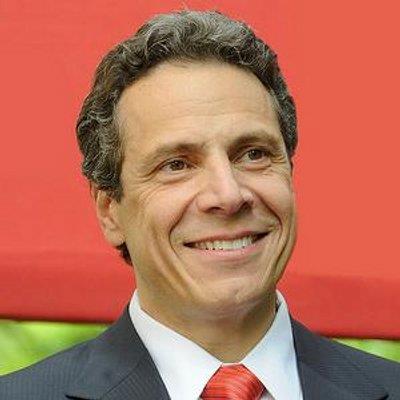
Governor Cuomo Announces Path Through History Event Recognizing the "New York Idea" and the Progressive Legacy of the Empire State
Special Exhibit at New York State Capitol, on Display Now, Highlights Impact of Franklin D. Roosevelt, Labor Movement Following Triangle Shirtwaist Fire, and Other Progressive Accomplishments
Governor Andrew M. Cuomo today announced the opening of a
Path Through History exhibit dedicated to the “New York Idea” – that lasting
social progress can be achieved through collective action – championed
by Franklin D. Roosevelt. Roosevelt was a Hyde Park native who served as the 44th Governor of New York State and the 32nd President of the United States. The exhibit also highlights other progressive
milestones in New York’s history, including the first minimum wage
and the labor rights movement following the Triangle Shirtwaist fire.
The exhibit is now open in the East Gallery of the New York State Capitol.
“Throughout our nation’s history, New York has been the progressive
leader that rises to meet the challenges of the day and sets an example
for others to follow,”
said Governor Cuomo. “This exhibit helps tell the story of how, from the leadership
of Franklin D. Roosevelt, to the activism and determination of exploited
workers after the tragedy of the Triangle Shirtwaist fire, New Yorkers
have been at the forefront of creating a better society for all. I am
proud that we are honoring these important contributions this year, as
we continue to fight for fairness and justice for New Yorkers.”
As president, Roosevelt’s recovery and reform measures provided
relief to millions of Americans suffering as a result of the Great Depression.
However, his vision for a better nation began right here in New York State,
where he quickly gained a reputation as a steadfast leader who turned
ideas into action. New York passed a minimum wage law five years before
it was enacted by the federal government – and when it passed at
both the state and federal levels, it was Roosevelt who was behind the
campaign to give workers fair wages, saying, "A self-supporting and
self-respecting democracy can plead no justification for the existence
of child labor, no economic reason for chiseling worker's wages, or
stretching workers' hours.” The law bolstered the state’s
economy and helped to lead New Yorkers out of the Depression.
The minimum wage law, prominently featured in the exhibit, is just one
example of the New York Idea: a belief in the ability of elected leaders
of all parties to work together and plant seeds of progress and policies
that persist long after their term is over, improving the lives and addressing
the needs of generations to come. While Roosevelt believed he was only
furthering the ideas of those who came before him, he was one of the greatest
practitioners of the New York Idea, setting a new model of progressive
action to which the nation looked when it needed a leader during troubling times.
“The Board of Regents and I are pleased to share artifacts and documents
from the State Museum, Library and Archives in this new exhibition at
the State Capitol,”
said State Education Commissioner MaryEllen Elia. “We hope visitors take advantage of this educational opportunity
to see a unique collection of objects on display and learn more about
the history of New York State and Governor Franklin D. Roosevelt.”
“This exhibition offers visitors a rare opportunity to see iconic
artifacts on display and learn more about Governor Franklin D. Roosevelt’s
legacy in New York,”
said New York State Museum Director Mark Schaming. “I commend Governor Andrew M. Cuomo for presenting this important
exhibition in the historic New York State Capitol.”
The exhibit, which will be open to the public for the next several weeks,
includes artifacts, images, and documents from the Franklin D. Roosevelt
Presidential Library and Museum, and the New York State Museum, Library
and Archives. One prominent feature on display will be the wheelchair
used by Roosevelt at Albany’s Executive Mansion during his term
as governor, from 1929 to 1932. He contracted polio in 1921, which left
him unable to stand or walk without assistance.
Additionally, the exhibit will feature artifacts from the labor movement,
such as a sewing machine from the Triangle Shirtwaist Factory fire, a
1911 tragedy from which new protections for workers emerged.
The educational exhibit also celebrates other New York ideas that inspired
the nation, like balancing industrial needs with environmental conservation,
creating the first public university system, and acting in a crisis to
help the immediate needs of people while investing in their long-term success.
The Roosevelt exhibit at the Capitol will not be the only celebration
of his life and legacy in 2016. This year marks the 75th anniversary of the
Franklin D. Roosevelt Presidential Library, the nation’s first presidential library, located in Hyde Park.
The library's mission is to foster research and education on the life
and times of Franklin and Eleanor Roosevelt, and their continuing impact
on contemporary life.
New York’s Path Through History program features a number of experiences
for New Yorkers and visitors to enjoy, including living history museums,
forts and military landmarks, and historic homes of artists, writers,
and six past U.S. Presidents. The program also includes the celebratory
Path Through History Weekend, set for June 18-19, 2016, a showcase of New York State's rich and
fascinating history that features hundreds of events at historic and cultural
destinations throughout the state. To learn how to plan your own Path
Through History,
click here.
For more information about visiting the New York State Capitol,
click here.
